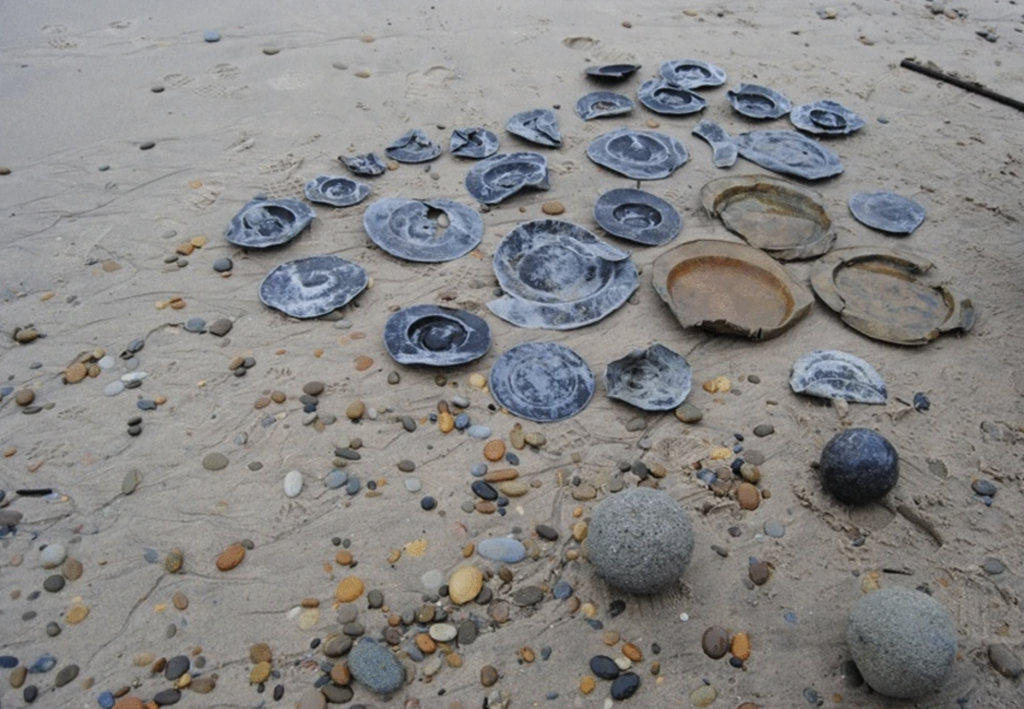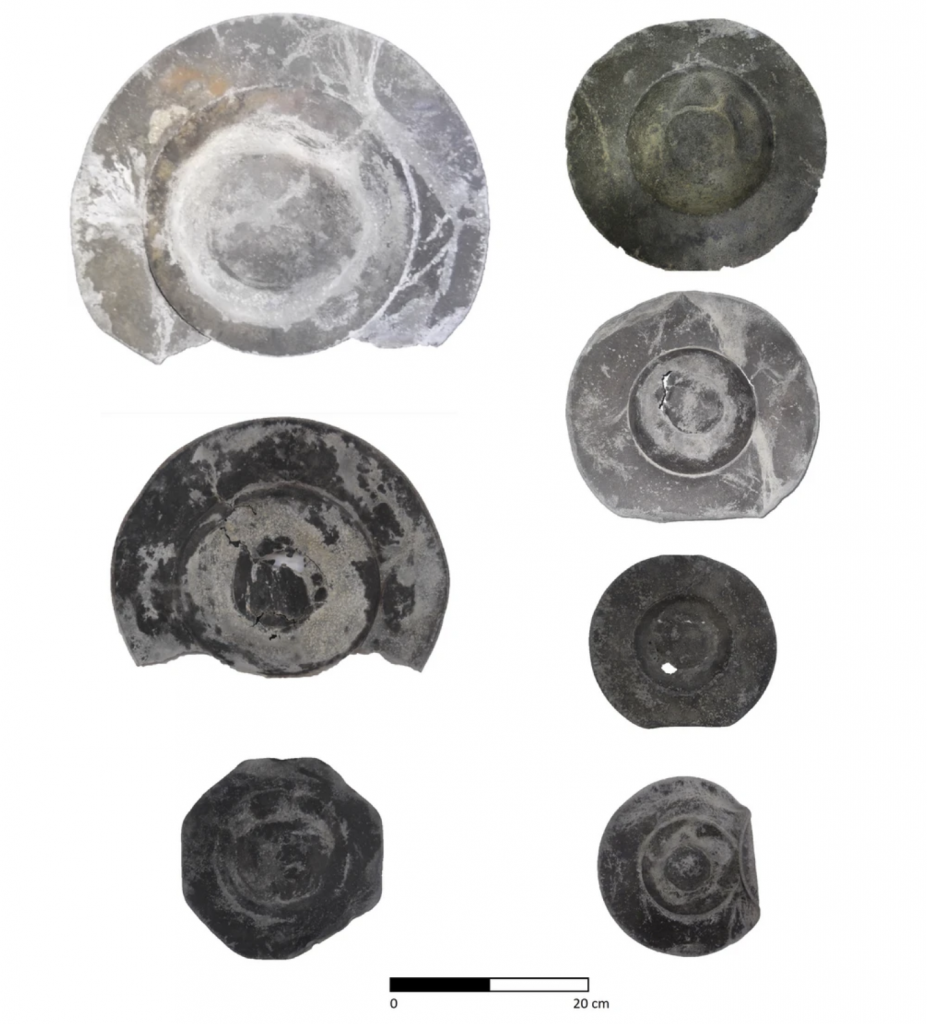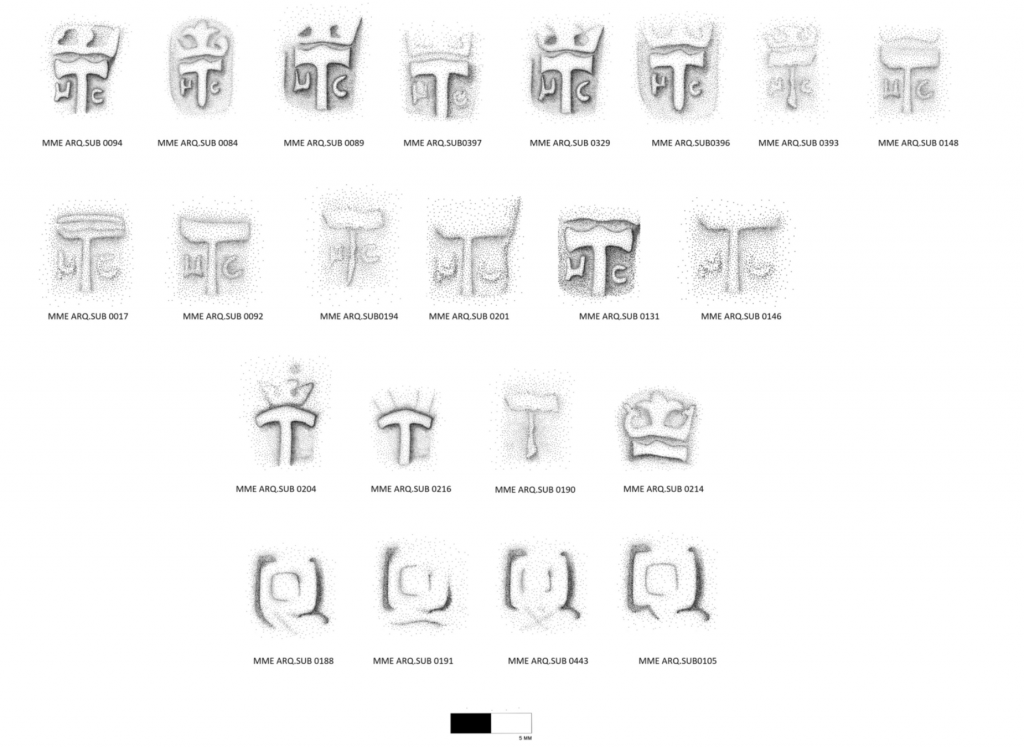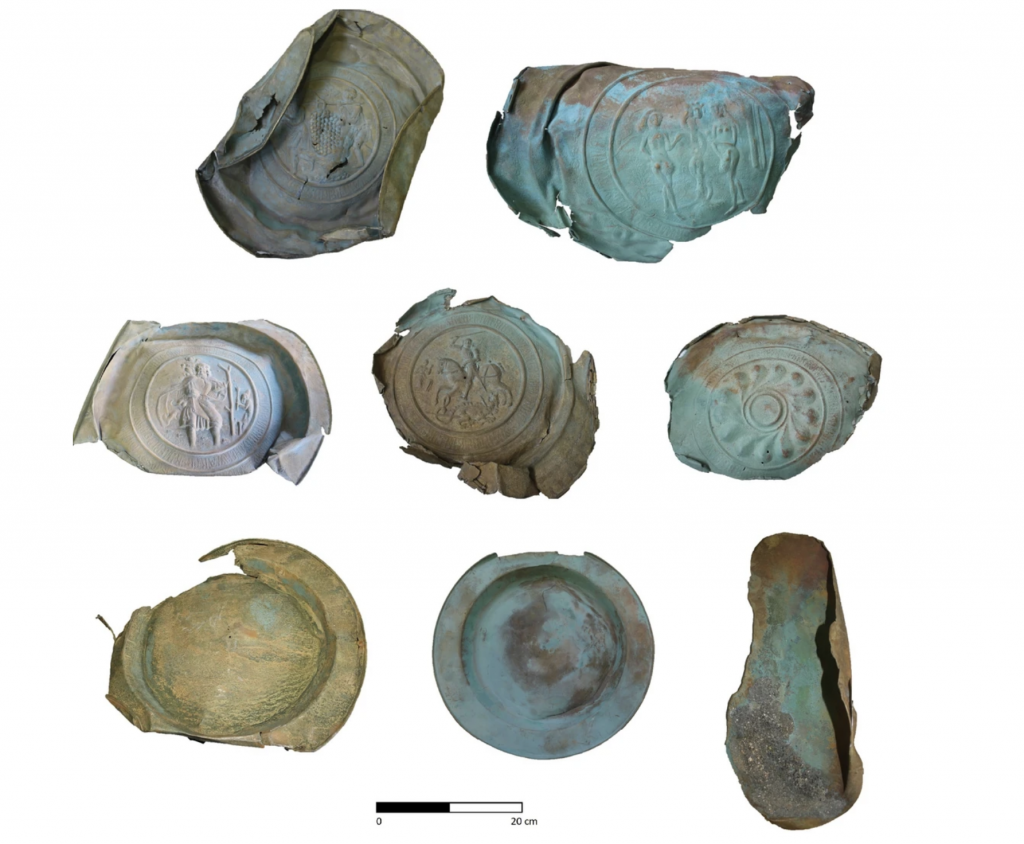Archaeology & History
A New Study on a 16th-Century Shipwreck in Portugal Reveals Its Valuable Cargo
The ship was carrying a trove of pewters and ceramics.

Ten years ago, a strong storm washed the loot of a 16th-century shipwreck ashore onto Belinho Beach in Portugal, an hour north of Porto. Following a decade’s worth of studies into the ship itself, researchers have finally analyzed the vessel’s valuable cargo in findings published in the Journal of Maritime Archaeology.
Luís Miguel Calheiros and João Sá, a local sculptor, were scouring Belinho Beach for found objects when they stumbled upon what they thought were old helmets. They alerted local authorities, who were overwhelmed with the sheer quantity of archaeological material that had turned up. Esposende Municipality sought Texas A&M University, the Conservation Laboratory of Vila do Conde Municipality, and D. Diogo de Sousa Museum to help clean and categorize the debris. The town hired a conservation technician in 2019, and the following year, a few of the relics appeared in a show commemorating Mageallan’s circumnavigation.

Pewter plates. Photo: Tânia Casimiro, https://doi.org/10.1007/s11457-024-09388-5.
As of this week, the cargo of the still-unidentified Belinho 1 has enjoyed the same attention as its artillery and hull. Thus far, academics studying the ship’s construction have traced it to Iberia circa the 16th century, based on its architectural signatures.
But recent studies question that conclusion. First off, none of the typical artifacts that would confirm an Iberian identification, like jewelry or coinage, were found. Instead, researchers logged 490 pewter fragments and 254 pewter vessels—mostly plates, but also three porringers, some with floral handles, and two spoons. While pewter often appears amongst Early Modern Age wrecks, it’s typically the sailors’ property, since pewter is sturdy enough for sea travel. Closer analysis on the plates revealed makers’ marks aligning with European workshops during the 16th century.

Makers’ marks identified in the pewter plates. Photo: A. Dempsey after C. Dostal, https://doi.org/10.1007/s11457-024-09388-5.
The team also studied 125 copper fragments corresponding to 34 plates—formerly high quality alms dishes, based on their detailed decorations. Nuremberg was the chief producer of such relics. Five biblical designs appear, such as Adam and Eve’s temptation, and St. George fighting a dragon to save a princess.
The remaining objects included seven iron items that were so degraded the researchers couldn’t identify them without X-ray, which showed they comprised two axe heads, at least two swords, and one nail. Thirty-two cannonballs of varied stones, origins, and sizes also washed ashore, along with two glazed ceramic shards.

Brass plates. Photo: Tânia Casimiro, https://doi.org/10.1007/s11457-024-09388-5.
A 2014 study posited that Belinhor 1 could be the wine-bearing Nossa Senhora da Rosa, which records say sunk in 1577. The new study inconclusively refutes that. Instead, it believes this ship belonged to a successful 16th-century merchant who meant to sell these metal treasures for use aboard other ships. The northern European goods found here belie an Iberian ship that departed from a higher latitude. “The coherence of the collection, especially the pewter and brass objects, suggests that they were most likely loaded in one single moment,” the study added. And, they don’t know its destination.
“No matter,” the study concluded. “The value of these objects suggests that this ship’s wreck was a huge economic loss for someone.” And it’s still a treasure today. Cargo isn’t often employed in helping researchers understand shipwrecks like this. The Esposende Municipality is at work acquiring a space to store the doomed haul.





